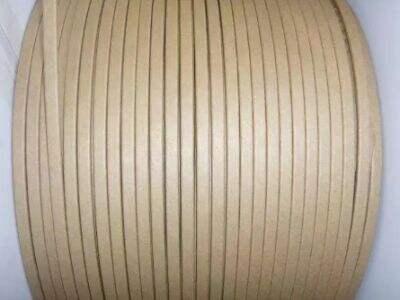Space-Saving Solution for PCB Assemblies
When it comes to creating and constructing printed circuit boards (PCBs), conserving space is often essential in electronics assembly. An emerging solution to this challenge, which has been gaining momentum in the last few years, is the flexible flat cable. These type of cables, known as FFCs provides for a narrow and quick way to make connections between or complete complex circuit connections on printed circuit boards (PCBs). In this article, we look into how flexible flat cables save space in PCB assembly operations and what is it that makes them so useful to manufacturers and consumers, all at once.
How Flexible Flat Cables Help to Improve Efficiency?
Flexible flat cables are thin, flat cable made up of multiple square conductors insulated with a dielectric material and laminated parallel to the other in flat / plane shape. This configuration permits an overall reduction in the size and weight of the cable as compared to round or ribbon cables. In PCB assembly operations, where space is often a limited resource, flexible flat cables can assist designers and fabricators in configuring their circuits more efficiently and in shrinking the size of their electronic gadgets.
Making the most of space - FPCs
One of the biggest benefits of flexible flat cables is their malleability, enabling them to bow or twist in any direction all while still maintaining signal integrity. This flexibility make them perfect for use in applications where a rigid cable would not work or can’t be used. The Shengweite flat aluminum wire in PCB assemblies enable manufacturers to create smaller and more efficient space-saving devices, without sacrificing performance or reliability. That means that they can take better advantage of the available space to make stylish, more streamlined products.
Advantages of Flexible Flat Cables in PCB Circuit Design
There are lots of advantages in using flat flexible cables as PCB designs. These cables also provides better and less obstructed air flow than common flat pack/ribbon cables, while their closely spaced leads increase signal density for space-saving solutions. Of equal importance and advantage is that they are light weight, flexible and easy to install and route in electronics enabling faster assembly times at lower cost. In addition, FFCs come in various sizes with different pitches, lengths, and number of conductors thus making them very flexible for a wide range of designs. In general, using FFC can lead to fast prototype and superior reliability and reduce total production costs for PCB fabricators.
Assembly Processes to Demo How FFC Can Unlock Space-Saving Potential
Flexible flat cables are described as versatile and efficient products for PCB space-saving in electronics assembly. Their small size, flexibility and high performance make Shengweite flat copper wire ideal for countless applications, from consumer devices to the industrial machines. Manufacturers can realize space savings, efficiency and performance gains in their electronic devices by implementing flexible flat cables into their designs. With the increasing need for smaller, lighter, and higher functioning electronics flexible flat cables will become ever more prevalent in meeting these demands. Given their efficiency in terms of space utilization and design plus layout ease, FFC unleash potential to take advantage of for PCB manufacturers and designers willing to one-up one another on a cutthroat electronic devices market.
Summary
To sum up, FFCs benefits when it comes to the PCB manufacturing that they are a powerful tool in helping manufacturers design smaller more efficient and higher-performance electronics. And because we hate cable spaghetti, with the help of flexible flat cables, companies such as Shengweite can remain on the cutting edge and continue to push new development products out that electronics practitioners demand. From small consumer devices to sophisticated industrial equipment, flexible flat cable are a practical and efficient way to save space and promote superior performance in PCBs.


